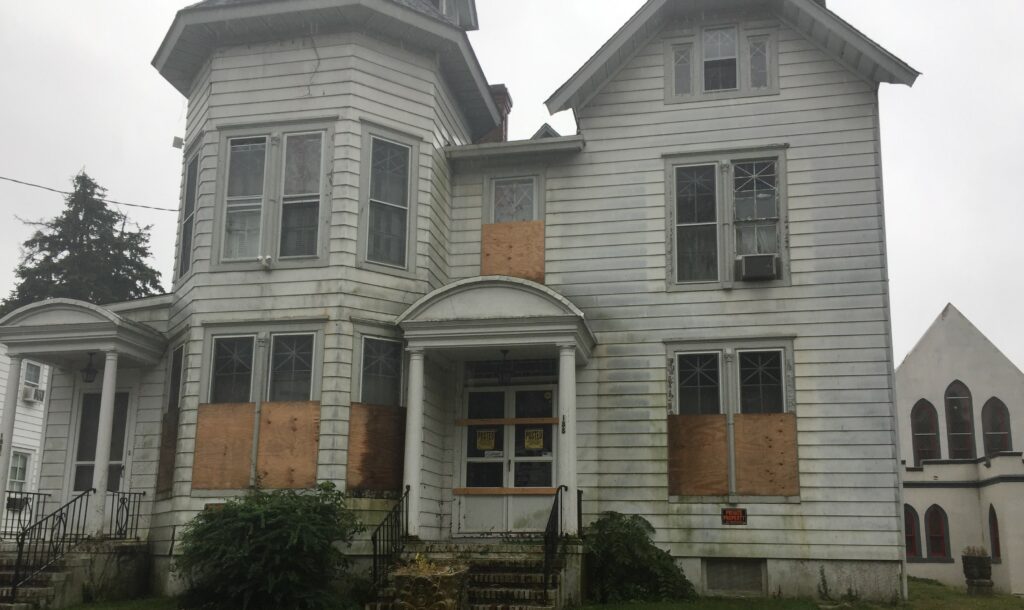Van Drew No Vote and the Sway of the Swing 20 IN 2020
Listen to audio version of this article

Rep. Jeff Van Drew (NJ Dist. 2) decision to be one of only two of the 233 Democrats in the House to oppose House Speaker Nancy Pelosi’s resolution to advance the Trump impeachment inquiry will be THAT vote most likely to carry his name forward into the footnotes of posterity, long after he’s left this earthly plain.
The southern Jersey lawmaker’s “no” vote reflects a pragmatic worldview that Democrats campaigning for the Presidency in places New Hampshire and Iowa would be well advised to not dismiss if they want to prevail in 2020.
“Without bipartisan support I believe this inquiry will further divide the country tearing it apart at the seams and will ultimately fail in the Senate,” wrote Mr. Van Drew in a statement.
The southern New Jersey representative did commit to make “a judgement call [on impeachment] based on all the evidence presented by these investigations” but went on to express the hope that he and his colleagues would still be “able to get some work done to help the American people like infrastructure, veteran’s benefits, environmental protections, immigration reform, reducing prescription drug cost, and strengthening Social Security.”
Mr. Van Drew’s political calculus was informed by the nature of his district, one of only 20 in the country that voted for President Obama twice in 2008 and 2012, and then flipped in 2016, opting for Mr. Trump over former Secretary of State Hillary Clinton.
The 20 flip districts include three from Iowa and one from New Hampshire. There are six in New York State with districts from Wisconsin, Illinois, Maine, Nevada as well as New Jersey’s 3rd District in the mix. (There is one in Pennsylvania that went for McCain in 2008, voted for Obama in 2012 and then for Trump in 2012.)
While there is no doubt that Mr. Trump’s machinations have created an atmosphere of chaos and crisis, there’s simultaneously an under reported deterioration at the margins in America, present in these 20 districts that have needed immediate attention for a generation and still have yet to get it. Between the prosecution of an endless war abroad, and never ending partisan bickering at home, whole communities slipped through the cracks.
It’s admittedly a major challenge to hold the President accountable for the Ukraine and so much more while addressing the serious slide that continues in the parts of the country both parties historically ignored.
In the overwhelming number of these 20 swing districts close to 40 percent of the school age children are entitled to a free or subsidized lunch. And while the Federal Reserve reports that 40 percent of American households would have a hard time coming up with $400 to cover an emergency expense, in a places like Cumberland County in Van Drew’s district the United Way reports 61 percent of households struggle week to week to make ends meet.
According to the United Way’s ALICE survey, which stands for Asset Limited, Income Constrained, and Employed, 19 percent of Cumberland County’s households live below the poverty line while another 42 percent struggle with their monthly bills.
Twenty-eight percent of Cumberland County’s children are living in poverty, twice the rate in the rest of New Jersey.
And in places like Cumberland County, there are significant public health consequences from this economic dislocation. According to the Robert Wood Johnson Foundation the county ranks lowest out of the state’s 21 counties in terms of the overall health of its residents. Factored in this ranking is local data on the length of life, health care and quality of life that are linked to issues like low birth weight, premature deaths and preventable hospital stays.
There are enough Cumberland Counties in our nation that for three years in a row America’s average life expectancy has declined, the first time that has happened since WW I. And while the national opioid crisis is cast as a national crisis, research indicates a majority of the 515,000 people who died from overdoses since 2006 “lived in poor areas where there were few job opportunities, researchers discovered,” according to Health News.
In Iowa, three of the state’s five Congressional Districts threw in the towel on the Democrats after eight years of “hope and change” and rejected Ms. Clinton for Mr. Trump. The United Way reports that in 2016 that 12 percent of Iowa families lived in poverty, with another 25 percent in that ALICE cohort struggling week to week. That combined 37 percent cohort reflected an increase of 27 percent since 2010.
According to the United Way’s Iowa analysis “low-wage jobs continued to dominate the employment landscape in Iowa, with 66 percent of all jobs paying less than $20 per hour. Although unemployment rates fell, wages remained low for many occupations. With more contract work and on-demand jobs, job instability also increased, making it difficult for ALICE workers to meet regular monthly expenses or to save.”
Headed into the last presidential election, the pundit consensus was that President Obama had rescued the national economy from the ditch of the Great Recession by helping foster a recovery, which was evident based on national aggregate unemployment data and the rebound of Wall Street. Of course, that meant the Democrats would win the White House.
But no one lives or votes in the aggregate.









Leave a Reply